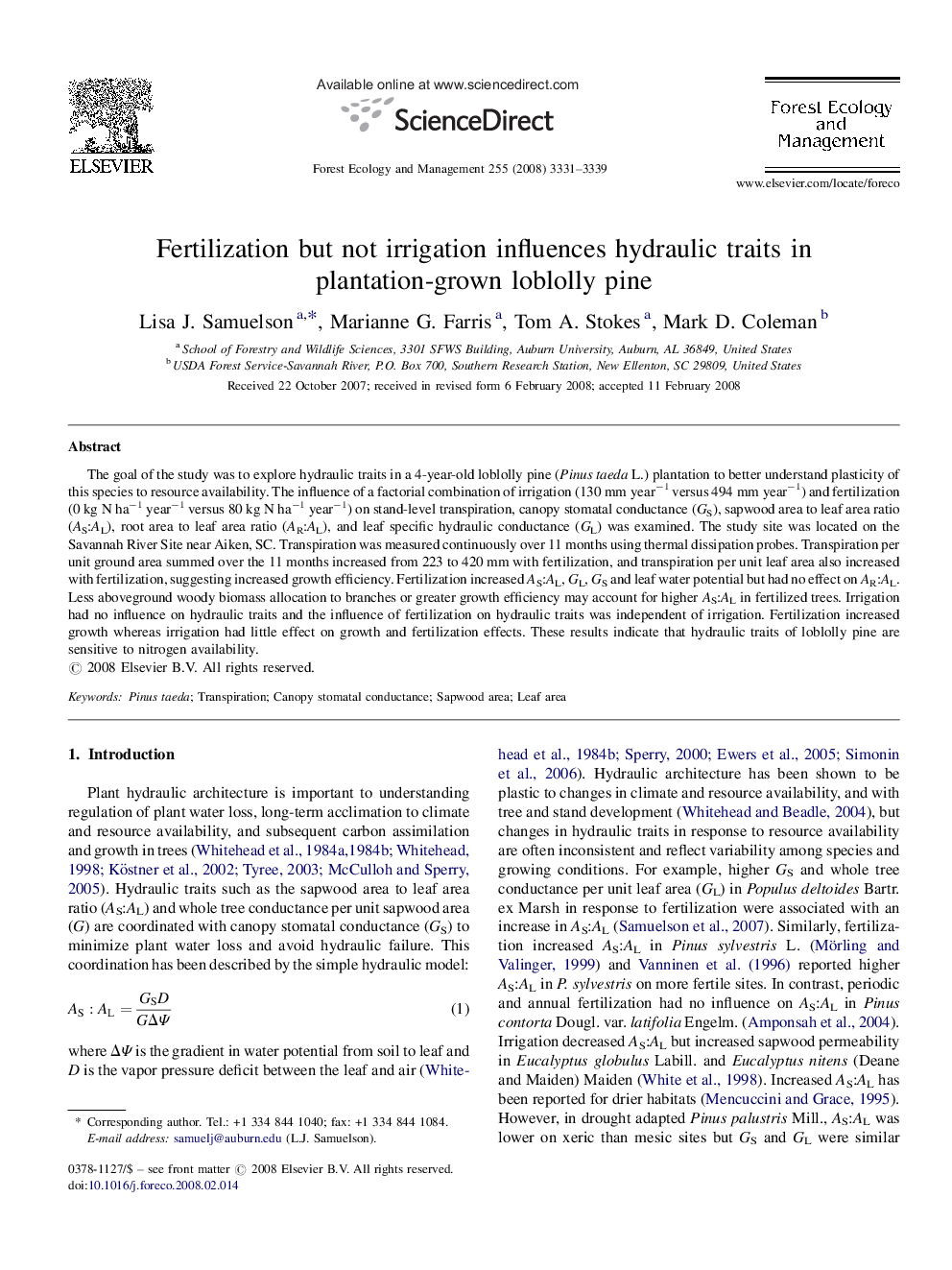| Article ID | Journal | Published Year | Pages | File Type |
|---|---|---|---|---|
| 89210 | Forest Ecology and Management | 2008 | 9 Pages |
The goal of the study was to explore hydraulic traits in a 4-year-old loblolly pine (Pinus taeda L.) plantation to better understand plasticity of this species to resource availability. The influence of a factorial combination of irrigation (130 mm year−1 versus 494 mm year−1) and fertilization (0 kg N ha−1 year−1 versus 80 kg N ha−1 year−1) on stand-level transpiration, canopy stomatal conductance (GS), sapwood area to leaf area ratio (AS:AL), root area to leaf area ratio (AR:AL), and leaf specific hydraulic conductance (GL) was examined. The study site was located on the Savannah River Site near Aiken, SC. Transpiration was measured continuously over 11 months using thermal dissipation probes. Transpiration per unit ground area summed over the 11 months increased from 223 to 420 mm with fertilization, and transpiration per unit leaf area also increased with fertilization, suggesting increased growth efficiency. Fertilization increased AS:AL, GL, GS and leaf water potential but had no effect on AR:AL. Less aboveground woody biomass allocation to branches or greater growth efficiency may account for higher AS:AL in fertilized trees. Irrigation had no influence on hydraulic traits and the influence of fertilization on hydraulic traits was independent of irrigation. Fertilization increased growth whereas irrigation had little effect on growth and fertilization effects. These results indicate that hydraulic traits of loblolly pine are sensitive to nitrogen availability.
